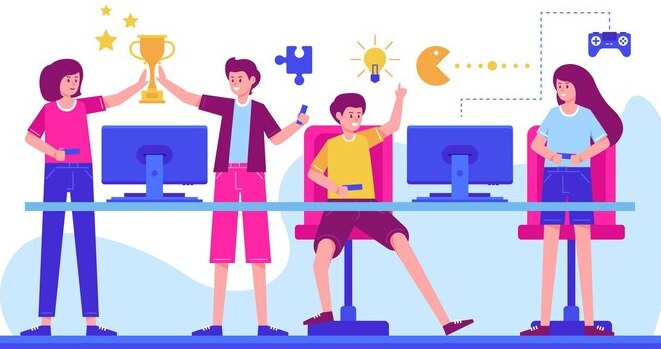
Gamification has revolutionized learning by transforming mundane processes into engaging, immersive, and results-driven experiences. When implemented effectively, LMS gamification can elevate skill acquisition, address pain points, and deliver an unparalleled level of learning. With elements like leaderboards, rewards, and storytelling, gamified LMS platforms are changing the game for education and corporate training alike.
In this blog, we’ll explore strategies to implement gamification in your LMS platform, discuss its benefits, and provide practical examples for maximizing its effectiveness.
Gamification in learning applies gaming elements to educational contexts to enhance the learning experience. Features such as points, badges, levels, and team challenges foster motivation, while user feedback helps learners track progress and improve. Examples of gamification in eLearning include language learning platforms where levels unlock new challenges and corporate gamified LMS platforms that promote skill development through interactive tasks.
Gamification in education is more than just fun; it’s a powerful tool to improve engagement, retention, and skill acquisition.
To reap the benefits of gamification, implement these proven strategies:
Align gamification elements with specific learning goals, such as skill development or improving pain points in traditional learning approaches.
Choose elements like points, badges, or team challenges that resonate with learners. For example, gamification in your LMS platform examples could include storytelling and real-time feedback.
Break content into manageable levels, gradually increasing difficulty to encourage continuous skill acquisition.
Collaborative activities and leaderboards encourage engagement and teamwork, boosting the effectiveness of gamification in education.
Immediate, constructive user feedback keeps learners informed about their progress and areas for improvement.
Allow learners to choose paths that match their preferences. This strategy is particularly impactful in language learning platforms and corporate settings.
Use robust tracking tools to monitor learner performance, identify challenges, and adapt gamification elements as needed.
These gamification in eLearning examples demonstrate the versatility of gamification across industries.
While gamification in teaching and learning offers numerous advantages, maintaining sustained engagement can be challenging. Balancing fun with educational value requires thoughtful planning, regular updates, and continuous assessment. By addressing these challenges, gamified LMS platforms can become indispensable tools for learners and educators alike.
The importance of gamification in teaching and learning cannot be overstated. It transforms the learning experience by making education interactive, motivating, and tailored. As gamified learning platforms evolve, emerging trends like AR and AI will further enhance their impact. By embracing LMS gamification, you can revolutionize skill acquisition and foster long-term learning success.